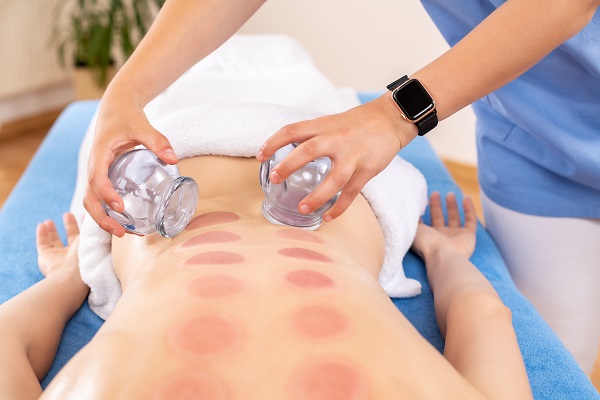
Image source: Google
In recent years, there has been a resurgence of interest in ancient healing practices as people seek alternative methods to improve their overall well-being. One such practice that has gained popularity is cupping therapy. Originating from traditional Chinese medicine, cupping therapy is now being embraced by modern wellness enthusiasts and healthcare professionals alike. Let's delve into the world of cupping therapy and explore how this age-old practice is making waves in contemporary wellness trends.
The History of Cupping Therapy
Cupping therapy dates back thousands of years and has been practiced in various cultures including Chinese, Egyptian, and Middle Eastern civilizations. It involves placing cups on the skin to create suction, which is believed to promote healing by increasing blood flow, reducing inflammation, and stimulating energy flow.
The Process of Cupping Therapy
- Cups are typically made of glass, silicone, or bamboo and come in different sizes.
- A flame is used to create a vacuum inside the cup before placing it on the skin.
- The cups can be left in place for a few minutes or moved around to target specific areas.
- After the session, the cups are removed, leaving behind distinctive circular marks that fade within a few days.
The Benefits of Cupping Therapy
Advocates of cupping therapy believe in its ability to address a wide range of health issues and promote overall wellness. Some potential benefits of cupping therapy include:
1. Pain Relief
- Cupping therapy is often used to alleviate muscle pain, back pain, and migraines.
- The suction created by the cups helps to improve circulation and reduce muscle tension.
2. Relaxation and Stress Reduction
- Many people find cupping therapy to be a relaxing experience that helps reduce stress and promote a sense of well-being.
- The gentle suction of the cups can also have a calming effect on the nervous system.
3. Detoxification
- By promoting lymphatic drainage, cupping therapy is believed to help the body eliminate toxins and waste products.
- Some practitioners suggest drinking plenty of water after a cupping session to help flush out toxins.
The Rise of Cupping Therapy in Modern Wellness
While cupping therapy has been practiced for centuries, its popularity has soared in recent years thanks to endorsements by celebrities, athletes, and influencers. The visibility of cupping therapy in popular culture has sparked interest in this ancient practice and propelled it into the mainstream wellness scene.
Celebrity Endorsements
- A-list celebrities like Gwyneth Paltrow, Jennifer Aniston, and Michael Phelps have openly praised the benefits of cupping therapy.
- Their endorsements have helped bring cupping therapy into the spotlight and piqued the curiosity of their fans.
Athletic Performance
- Many professional athletes incorporate cupping therapy into their training routines to aid in muscle recovery and enhance performance.
- Cupping therapy is believed to help reduce muscle soreness and improve flexibility, making it a popular choice among athletes seeking a competitive edge.
Social Media Influence
- Wellness influencers and bloggers frequently feature cupping therapy in their social media posts, showcasing its benefits and increasing its visibility among their followers.
- The trendiness of cupping therapy on platforms like Instagram has made it more accessible and appealing to a younger demographic.
Is Cupping Therapy Right for You?
Before trying cupping therapy, it's essential to consult with a qualified healthcare provider to discuss any underlying health conditions or concerns. While cupping therapy is generally considered safe, there are certain situations where it may not be recommended. Additionally, it's essential to seek out a trained and experienced practitioner to ensure a safe and effective treatment.
Who Should Consider Cupping Therapy?
- Individuals seeking natural pain relief or stress reduction.
- Athletes looking to improve muscle recovery and performance.
- Those interested in exploring alternative and complementary therapies.
Who Should Avoid Cupping Therapy?
- People with skin conditions, such as eczema or psoriasis, in the treatment area.
- Individuals taking blood-thinning medications or who have a history of blood clots.
- Pregnant women, particularly in the abdominal or lower back regions.
Conclusion
Cupping therapy is a time-honored practice that continues to gain traction in today's wellness landscape. Whether you're seeking pain relief, relaxation, or a natural way to support your overall well-being, cupping therapy offers a holistic approach to health and healing. By combining ancient wisdom with modern techniques, cupping therapy is reshaping wellness trends and providing a unique avenue for self-care and rejuvenation.